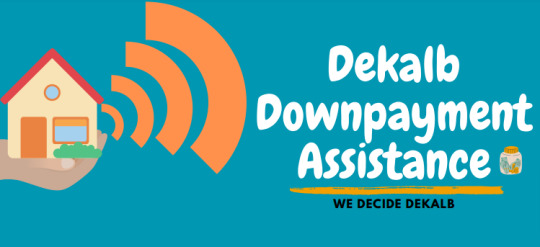#1 percent down payment programs
Explore tagged Tumblr posts
Text
Zillow Home Loans Launches 1% Down Mortgages
Zillow Home Loans Launches 1% Down Mortgages In An Attempt To Compete With Rocket And UWM Zillow Home Loans announces it is launching a 1% Down Payment program. The new Zillow program would allow eligible first-time home buyers to pay as little as 1% down on their next home purchase. Right now, Zillow is only offering the program to first time Arizona home buyers. However, the company plans to…

View On WordPress
#1 percent down payment programs#1% down payment#banking#banks#debt#liens#mortgages#real estate#Rocket Mortgage 1 percent down payment#UWM 1 percent down payment program#Zillow#zillow 1 percent down program#Zillow Home Loans
0 notes
Text
The 4 Biggest Myths That Are Holding Back Home Buyers
Buying a home for the first time can be confusing and intimidating. More so if many of the things you believe turn out to be myths that only hinder you from starting your home search or making an offer on a home.
We're here to help you clear those misconceptions so you’ll have the right mindset and strategies on your path towards homeownership.
1. “I need a 20 percent down payment.”
Saving for a down payment isn't only a challenge for many renters and non-owners alike; it’s a roadblock that hinders them from entering the housing market. And many first-time home buyers believe they still need a 20% down payment before they can get approved for a mortgage. That may be true a few decades ago, but that’s no longer the case these days. In fact, the median down payment for first-time buyers remains steady at 6 percent in the past several years. Times are changing, and through various government programs available, buyers are now allowed to put as little as 3.5% to achieve their American dream of homeownership.
Nowadays, you only need to be comfortable and confident in deciding how much you will give as a down payment. Sure, you must pay more for your mortgage each month (including Private Mortgage Insurance or PMI) if you put less than 20% of the home's purchase price, but it'll help you save more money on other financial goals and have a cushion for emergencies.
2. “I can't get a mortgage if I don’t have a perfect credit score!”
Similar to the 20% down payment, many Americans are also misinformed about the FICO score needed to qualify for a mortgage. They think that they need to have a “good” credit score of 780 or higher. But the truth is your credit score doesn't have to be perfect. The median credit score range for many approved mortgages in the past years is 670 to 739.
There are other factors that lenders take into consideration when deciding whether you'll be approved for a mortgage, including your employment history, debt-to-income (DTI) ratio, and the amount you can give as a down payment. Also, the required credit score also depends on the type of loan you’re getting. Conventional loans have the strictest standards and require a score of at least 620. Meanwhile, FHA loans need a minimum credit score of 580. So if you have a lower credit score, don’t think that you’re already out of the game. There are measures you can take to improve it before applying for a mortgage.
3. “I'll skip hiring a real estate agent to save money.”
There are many costs associated with buying a home, but there's no good reason for you to skip working with a realtor thinking that you can save money. In reality, you can get all the advantages of having a buyer’s agent working for your best interest for free. Yes, they do get a commission, but it is usually paid by the seller and is built into the home’s selling price. Even if you show up without an agent thinking that you can get a discount on the price, the consequence of that could be stress, and wasted time and money.
Using their expertise, negotiation skills, and comparables, realtors can help you get the lowest purchase price for your dream home. They can also help you understand the complicated real estate contracts and guide you through things like home appraisals, inspections, contingency clauses, among others.
4. “I'll wait until spring to start my home search.”
Traditionally, the housing inventory is greater in spring. Buyers are flooding the housing market and most sellers are putting their single-family homes or condominiums for sale. This heightened activity usually translates to escalating prices and multiple offers on properties. However, it's wrong to think that spring is the only “best” time for buying a home. All real estate markets are different, and you should base your decision on your personal circumstances and the local market conditions.
Sure, many people are looking to sell or buy in spring when the weather is nice and everyone is motivated, but there are ways to make a home attractive even in fall or winter. In some markets, it is better to start your search before or after the spring. There may be fewer homes available, especially during winter, but you might even find better bargains since sellers may want to relocate quickly or may be desperate to sell.
0 notes
Text
Wuling Hosts Year-End Sale Showcase in Jakarta and Bekasi

As the year winds down, Wuling Motors Indonesia is throwing open its doors for everyone to come and visit its latest automobile innovations. This November, the brand once again mounts its much-awaited "Year End Sale" exhibition in key malls across Jakarta and Bekasi. Here, those who will attend will get to experience the latest that Wuling has to offer: not just being given the opportunity to test-drive Wuling's latest models for ICE, but for the very first time, the car manufacturing company will let them glimpse its latest EV offering - an offering that is about to pave the way into the future of the brand. The event is also dotted with lots of promos, test rides, special privileges for visitors and potential buyers as well.
Exhibition Dates and Venues
Wuling Exhibition. The events will be shown at Kota Kasablanka Mall from November 6 to 10, Mall Kelapa Gading and Summarecon Mall Bekasi from November 20 to 24 and Puri Indah Mall on November 27 up to December 1, 2024. At each venue, visitors will get an opportunity to experience the dynamic array of Wuling and avail themselves of special treats.
Privileges and Deals
Indeed, Wuling really brings out the big guns in terms of promotions on most sought-after models. These include:
Low Down Payment: Starting at IDR 16 million on models for an ICE. Zero Interest Financing: Two years for Almaz and BinguoEV models. Free Insurance: The Air ev and BinguoEV Premium Range models. YES Packages: up to IDR 72 million of total benefits for BinguoEV model
Other than the purchase benefit, Wuling has more if you take the package "Work-Free with Wuling EV" for those who purchase EV; lifetime warranty on its core components; free maintenance until it reaches 15.5 years or 155,000 km; and the installed 7kW AC charger is free of charge, in addition to the IDR 2 million electricity voucher for a year to the purchaser of Air ev. More benefits for SUV buyers targeting Wuling's Alvez and New Almaz RS are offered by the 'Berani Lebih Bersama Wuling SUV' program, guaranteeing a third-year resale value at 70 percent, free maintenance for 8 years up to 100,000 kilometers, and lifetime warranty on hybrid car components.
Direct rewards such as shopping vouchers to the local store worth IDR 2 million is always something to look forward to. However, what makes it very special is that it is complemented by a Lucky Dip which will help you find the gift prizes: Smart Band, Xiaomi Pad SE, and an iPhone.
For more updated information about the automotive market, the latest cars & bikes, Please visit our website https://www.autoini.com
0 notes
Text
Education
Courts block part of Biden’s student loan repayment plan for millions
The two court rulings, in response to lawsuits filed by Republican-led states, prohibit the Education Department from moving ahead with major provisions of Biden’s SAVE loan repayment program.
A pair of federal judges on Monday halted key parts of President Joe Biden’s new student loan repayment program, imperiling the administration’s plan to lower monthly payments and erase student debt for millions of Americans ahead of the November election.
The two court rulings, in response to lawsuits filed by Republican-led states, prohibit the Education Department from moving ahead with major provisions of Biden’s SAVE loan repayment program. The decisions prevent the Biden administration from further reducing the monthly payments of millions of borrowers as planned in July or canceling more debt under the program.
More than 8 million loan borrowers are enrolled in the SAVE plan, which the Biden administration launched last year, touting it as the most affordable option ever for federal student loan borrowers. The Education Department already invoked the loan forgiveness provisions of the plan to cancel $5.5 billion of debt for 414,000 borrowers, with more scheduled.
The SAVE program has been a cornerstone of the Biden administration’s efforts to provide student debt relief to borrowers even as the Covid-era payment pause expired last year and Biden’s bigger ambitions for mass loan forgiveness were blocked at the Supreme Court.
But Republicans have argued that the program is the latest in a string of Biden executive actions to ease or erase student debt that far exceed the administration’s legal authority. On Monday, a pair of Obama-appointed federal judges partially agreed with them, issuing separate preliminary injunctions against different parts of the SAVE program.
District Judge John A. Ross of the Eastern District of Missouri blocked the Education Department from carrying out “any further loan forgiveness for borrowers” under the SAVE program until he decides the full case.
Ross ruled that Missouri Attorney General Andrew Bailey and other GOP states who sued were likely to succeed on their claims that the Biden administration lacks the authority to forgive student debt under the SAVE program.
He agreed that the program’s loan forgiveness provisions would likely harm Missouri because it would reduce the fees that the Education Department pays to the Missouri Higher Education Assistance Agency. That’s the same state-created entity that was at the center of the Supreme Court case over Biden’s first mass student debt relief program.
Federal student loan borrowers typically must repay their debts for 20 or 25 years to have their remaining balances discharged under the Education Department’s income-driven repayment plans. But the SAVE plan had offered a new, shorter timeline for forgiveness, canceling debt after just 10 years for borrowers who initially took out less than $12,000.
Meanwhile in Kansas, District Judge Daniel Crabtree blocked the Education Department from implementing a part of the SAVE program that would further lower some borrowers’ monthly payments, in some cases cutting them in half.
The SAVE plan has already lowered monthly payments — or eliminated them entirely for low-income borrowers — for millions of borrowers. But a second phase of the program, which was set to take effect July 1, was supposed to recalculate borrowers’ monthly payments and cap them at 5 percent of their discretionary income, down from the current 10 percent.
Crabtree ruled that the Republican states were likely to succeed on their claims that the Education Department lacked clear authority from Congress to enact the SAVE plan.
But he declined to block the entirety of the program, citing concerns about the feasibility of unwinding the parts of the program that had already been implemented. He also wrote that the Republican states’ delay in filing the lawsuit months after the plan was announced undercut their arguments that there was an immediate need to block the entire program.
The Education Department did not immediately have a comment on the ruling.
The order from the Missouri-based judge blocking the loan forgiveness provisions takes effect immediately. The Kansas-based judge deferred his injunction blocking the lower monthly payments until June 30 to give the administration time to appeal the order.
Groups advocating for student debt relief slammed the ruling saying that borrowers are now in limbo.
Mike Pierce, the executive director of the Student Borrower Protection Center, blasted the courts for creating “chaos across the student loan system” and said the Biden administration should consider “shutting the student loan system down until borrowers have access to the rights they were promised under the law.”
Sign up for POLITICO Breaking News Alerts to receive the latest updates in your inbox.
0 notes
Text
Home Buying Tips: In Canada
Buying a home is a big and exciting decision. To ensure that your new Canadian home is a dream come true, you want to make sure every element is absolutely right. That is from choosing the ideal house to obtaining finance. However, knowing what to put first when purchasing a home can be challenging. The wide range of information available on what to do and what not to do is quite challenging. Continue reading to find out what you should know before making that significant purchase!
What should I know before buying a property in Canada?

Thus, purchasing a home is a financial and emotional decision that needs to be carefully considered and involves planning, research, and critical thought. Let us begin by discussing the necessary preparations!
Five Things to Get Ready for When Purchasing a Home in Canada
When purchasing a home in Canada, you should be ready for a few things. Before you can complete the purchase, you’ll need to arrange everything, including taxes, fees, insurance, and documentation.
1. The fundamental conditions for home buyers
Purchasing a townhouse for sale coquitlam is an exciting and transformative choice. However, there are a few prerequisites you should be aware of before getting started.
It would help if you were in good credit standing.
Sufficient funds for a deposit and closing charges
Setting aside money for your mortgage, both age and status of residency
2. Sufficient money for a deposit
In Canada, buying a home normally requires having sufficient funds for a down payment, which is typically five percent of the total cost. This could seem like a big amount, particularly if money is tight.
The good news is that you can have a portion of the amount of money on hand. To pay for their down payment, the majority of Canadian buyers combine savings, investments, and loans or grants from the government.
3. Having a mortgage authorized
Getting accepted for a mortgage is one of the first things you’ll need to do if you’ve decided to buy homes for sale in port coquitlam bc. Even experienced house purchasers may find it difficult, so we’re here to support you.
4. Initial Homebuyer Incentive Application
Incentives can be available to you if you’re a first-time home buyer in Canada. The First-Time Home Buyer Incentive and Mortgage Insurance are two of the many helpful programs provided by the federal government.
5. A trustworthy real estate representative
When purchasing a homes for sale in port coquitlam bc canada, you must choose a real estate agent. They can assist you with all aspects of the procedure, including researching and selecting properties as well as settling on a fair price.
How to choose a coquitlam real estate agent?
1. Do your research, both online and offline
After doing some research on real estate agents that specialize in the area you want to purchase in, get referrals from friends, family, and co-workers. Additionally, you can look up the ratings and reviews of realtors online.
2. Pick an experienced and knowledgeable person
Ensure that the realtor you have selected has sufficient experience in both types of property and the area in which you are hoping to purchase a home.
3. Verify that you are at ease around them
It’s critical to select a partner who recognizes the emotional nature of the house-buying process. Verify that the prospective agent will listen to your demands and be prepared to be patient throughout the procedure.
Conclusion:
The process of purchasing a home in Canada for the first time might be challenging, but it can also be quite fulfilling. Remember to conduct thorough research and ask lots of questions as you go. Coquitlam Property Group offers your low rate assurance if you are prepared to obtain that pre-qualification from a lender and are already familiar with the process.
0 notes
Text
Tips for Younger Homebuyers: How To Make Your Dream a Reality
If you’re a member of a younger generation, like Gen Z, you may be asking the question: will I ever be able to buy a home? And chances are, you’re worried that’s not going to be in the cards with inflation, rising home prices, mortgage rates, and more seemingly stacked against you.
While there’s no arguing this housing market is challenging for first-time homebuyers, it is still achievable, especially if you have professionals on your side.
Here are some helpful tips you may get from a pro.
1. Explore Your Options for a Down Payment
If a down payment is your #1 hurdle, you may have options to give your savings a boost. There are over 2,000 down payment assistance programs designed to make homeownership more achievable. And, that’s not the only place you may be able to get a helping hand. While it may not be an option for everyone, 49% of Gen Z homebuyers got money from loved ones that they used toward a down payment, according to LendingTree.
And chances are you won’t need to put 20% down (unless specified by your loan type or lender). So be sure to work with a trusted mortgage professional to explore your options, find out how much you’ll really need, and learn about any guidelines on getting a gift from loved ones.
2. Live with Loved Ones To Boost Your Savings
Another thing a number of Gen Z buyers are doing is ditching their rental and moving back in with friends or family. This can help cut down your housing costs so you can build your savings a whole lot faster. As Bankrate explains:
“. . . many have opted to stop renting and live with family in order to boost their savings. Thirty percent of Gen Z homebuyers move directly from their family member’s home to a home of their own, according to NAR.”
3. Cast a Broad Net for Your Search
When you’ve saved up enough, here’s how a pro will help you approach your search. Since the supply of homes for sale is still low and affordability is tight, they’ll give you strategies and avenues you may not have considered to open up your pool of options.
For example, it’s usually more affordable if you consider a rural or suburban area versus an urban one. So, while the city may be livelier and more energetic, the cost of living may be reason enough to look at something further out. And if you consider smaller homes and condos or townhouses, you’ll give yourself even more ways to break into the market. As Colby Stout, Research Analyst at Bright MLS, explains:
“Being flexible on the types of home (e.g., a condo or townhome versus a single-family home) and exploring more affordable neighborhoods is important for first-time buyers.”
4. Take a Close Look at Your Wants and Needs
And lastly, an agent can help you really think about your must-have’s and nice-to-have’s. Remember, your first home doesn’t have to be your forever home. You just need to get your foot in the door to start building equity. If you want to buy, you may find making some compromises is worth it. As Chase says:
“An open-minded approach to house-hunting may be one way for Gen Z homebuyers to maintain some edge. This could mean buying in areas that are less expensive. Differentiating needs vs. wants may help in this area as well.”
An agent will help you prioritize your list of home features and find houses that can deliver on the top ones. And they’ll be able to explain how equity can benefit you in the long run and make it possible to move into that dream home down the line.
Bottom Line
Real estate professionals have expertise on what’s working for other buyers like you. Lean on them for tips and advice along the way. As Directors Mortgage says, with that support you can make it happen:
“The path to homeownership may not be a straightforward one for Gen Z, but it’s undoubtedly within reach. By adopting the right strategies, like exploring down payment assistance programs and sharing living costs with relatives, you can bring your dream of owning a home closer to reality.”
Let’s connect to get you set up for long-term success.
0 notes
Text

Tips for Younger Homebuyers: How To Make Your Dream a Reality

If you’re a member of a younger generation, like Gen Z, you may be asking the question: will I ever be able to buy a home? And chances are, you’re worried that’s not going to be in the cards with inflation, rising home prices, mortgage rates, and more seemingly stacked against you.
While there’s no arguing this housing market is challenging for first-time homebuyers, it is still achievable, especially if you have professionals on your side.
Here are some helpful tips you may get from a pro.
1. Explore Your Options for a Down Payment
If a down payment is your #1 hurdle, you may have options to give your savings a boost. There are over 2,000 down payment assistance programs designed to make homeownership more achievable. And, that’s not the only place you may be able to get a helping hand. While it may not be an option for everyone, 49% of Gen Z homebuyers got money from loved ones that they used toward a down payment, according to LendingTree.
And chances are you won’t need to put 20% down (unless specified by your loan type or lender). So be sure to work with a trusted mortgage professional to explore your options, find out how much you’ll really need, and learn about any guidelines on getting a gift from loved ones.
2. Live with Loved Ones To Boost Your Savings
Another thing a number of Gen Z buyers are doing is ditching their rental and moving back in with friends or family. This can help cut down your housing costs so you can build your savings a whole lot faster. As Bankrate explains:
“. . . many have opted to stop renting and live with family in order to boost their savings. Thirty percent of Gen Z homebuyers move directly from their family member’s home to a home of their own, according to NAR.”
3. Cast a Broad Net for Your Search
When you’ve saved up enough, here’s how a pro will help you approach your search. Since the supply of homes for sale is still low and affordability is tight, they’ll give you strategies and avenues you may not have considered to open up your pool of options.
For example, it’s usually more affordable if you consider a rural or suburban area versus an urban one. So, while the city may be livelier and more energetic, the cost of living may be reason enough to look at something further out. And if you consider smaller homes and condos or townhouses, you’ll give yourself even more ways to break into the market. As Colby Stout, Research Analyst at Bright MLS, explains:
“Being flexible on the types of home (e.g., a condo or townhome versus a single-family home) and exploring more affordable neighborhoods is important for first-time buyers.”
4. Take a Close Look at Your Wants and Needs
And lastly, an agent can help you really think about your must-have’s and nice-to-have’s. Remember, your first home doesn’t have to be your forever home. You just need to get your foot in the door to start building equity. If you want to buy, you may find making some compromises is worth it. As Chase says:
“An open-minded approach to house-hunting may be one way for Gen Z homebuyers to maintain some edge. This could mean buying in areas that are less expensive. Differentiating needs vs. wants may help in this area as well.”
An agent will help you prioritize your list of home features and find houses that can deliver on the top ones. And they’ll be able to explain how equity can benefit you in the long run and make it possible to move into that dream home down the line.
Bottom Line
Real estate professionals have expertise on what’s working for other buyers like you. Lean on them for tips and advice along the way. As Directors Mortgage says, with that support you can make it happen:
“The path to homeownership may not be a straightforward one for Gen Z, but it’s undoubtedly within reach. By adopting the right strategies, like exploring down payment assistance programs and sharing living costs with relatives, you can bring your dream of owning a home closer to reality.”
Let’s connect to get you set up for long-term success.
#exprealty#losangeles#neilsingerman#homebuying#homeownership#mortgageapplication#interest rates#homesforsale
0 notes
Text
Ready To Start Your Own Homestead? How to Buy Land If You’re Broke.


Fast forward to 2020. After 2020, momentum started slowing down. When the pandemic hit, all of a sudden, everyone was becoming a writer and working from home (they had no choice). So the market became extremely oversaturated. As time went by, AI (artificial intelligence) started taking over writing tasks, people started turning to video instead of the written word (blogging) to absorb information, and then people started doing their own writing to save money. Companies started hiring people overseas to handle the writing and other virtual assistant tasks. My client list was significantly dwindling… Today, I have not one client.
So I had to make the decision, do I go back and work in the restaurant business (the only skill I had) or something else? Well I decided to start working Uber and Doordash to pay the bills and continue to write on Medium. I came across Medium in 2020 when I was working for a client who was starting a podcast and we tried Medium as a way to spread the word. I liked the way you could start the Partner Program and make money and so I started my own profile.

But I think I’m getting tired of striving to make money. I think for 2024 and beyond, I’m going to focus more on how to save money, how to be content with what I have, and how to escape the rat race and go off the grid by buying a piece of land and slowly trying to build up a homestead. I’ve always toyed with the idea, but it’s starting to become more and more intriguing to me.
My sister-in-law bought her own land and now she lives rent free, in an RV. Her husband built a well and they buy all of their cars cash, so no car payments. They only pay for food, electricity, and the phone bill. Beautiful. I need that.
So today’s post will cover buying a piece of land with no money and no credit. Let’s go!

1. You’re going to scour the papers. The little local papers have the best deals. Obviously, you’re going to get the papers in your county, but cross the line into the other counties around you, if this is the general area you want to live, and get all the papers from all the counties, and then go home and just sit there with a sharpie and scour the papers. What you’re looking for is owner finance.
You’re trying to look for “land for sale by owner” because there’s no way you can go through a bank. A bank is never going to give you a loan because you have no money for a down payment, you have bad credit, or no credit, so forget it. They will not even consider you, but there’s still hope in doing it this way.
2. Once you find a good prospect, call up the owner, and ask them how much they want for the down payment. Just be friendly and honest. I find that’s the best way to be, just be direct, and if she/he says the down payment is too big, just say, “I can’t afford that.” Sometimes you can work out a deal and they’ll lower that down payment, especially if they feel you’re nice and honest and they can work with you.
3. The next question you want to ask them is how much of an interest rate they want on the deal. You want between 8–10 percent. You’re not going to get a fabulous interest rate, like a bank would give you, because you’re just not going to do that when your owner-financing.
10 Positive Ways to Start Your Day
10 Positive Changes You Should Make Everyday
medium.com

What you’re going to do with that is go on the county website and you’re going to go to the property appraiser’s office. You want the zoning department and you have to look and see if that property is zoned residential/agricultural. That’s a combination of residential / agricultural, that is what you want. Or strictly agricultural. Usually, strictly agricultural is on a bigger piece of property and most likely, if it’s two to three acres, it’s going to be residential / agricultural, which is fine. While you’re looking up the zoning, it has to have the word “agricultural” in there or you’re not going to be able to have a homestead. You’re not going to be able to have the animals, and you want to raise your own food on a homestead.
5. The next thing you want to look up while you’re on that website is to see whether the property is in the hundred years flood zone. You really don’t want a property that’s in a hundred year flood zone because it’s going to be a damp piece of property and if you plan on having animals, that’s never a good thing. If you want your animals to be healthy and problem-free you need dry land. High and dry, it can’t be muddy, damp, swampy, buggy property. It’s just going to be miserable. So, if the zoning and the flood zone check out, and it’s all good to go, you’re going to drive to the piece of property.

Once you get there, and you get out, and you get onto the property, what you want to see, since it’s a small piece of property, is a flat piece of property. You want every inch of that property to be usable, because you know it is a small piece of property on purpose, very intentional. At the same time, you want to be able to use every inch of it while you’re laying out your homestead.
6. The next step is you have to find a title company. The title company does all the research for a fee, they do charge, It does all the research to make sure the person you’re dealing with is the actual owner of that property. It also checks out and makes sure that there’s no liens on that property from the past.
7. The last step is you have your title insurance, you sign the contract, and just seal the deal with your signature and congratulations! You are now a landowner! It is so exciting and most importantly, it’s very doable!
😃Kristen is a contributor on Medium. Sign up here to catch every story when she publishes.
🍉Grab my audiobook on Audible: How to Productize Your Services: How to Make Money While You’re Sleeping or on��paperback through Amazon here or eBook through Gumroad here.
🌺Follow Kristen on Substack: https://substack.com/@kristenb
Originally posted on Medium
0 notes
Text
First Home Owners Grant Programs
Buying your first home may seem intimidating, but there are many resources available to make the process easier. Some are loans, and others are grants. The main difference is that loans must be repaid while grants do not.
First home owners grant programs offer mortgage and down payment assistance. Program requirements vary by state and county.
1. Down Payment Assistance
Down payment assistance can come in the form of grants or low-interest loans, and it's usually reserved for borrowers who qualify as first-time home buyers. Many programs also require that borrowers complete a homebuyer education course. Program requirements vary, but some may have income limits and only offer funds for a single-family home, condominium, co-op or manufactured home. Loans typically have deferred payment options and can be forgiven after a certain period of time.
One common requirement is that a buyer must contribute to the purchase through a cash contribution or a zero-interest loan. Additionally, most programs restrict their availability to borrowers who earn no more than 80 percent of the area median income and may enforce minimum credit score requirements. Local and state governments also run programs that are geared toward specific cities, neighborhoods or communities. These often include additional eligibility criteria, such as requiring that a buyer work in a specific field. In the case of a forgivable loan, this means that a homebuyer will have to live in the property for at least five years before the loan is forgiven.
2. Mortgage Assistance
Homeownership is the centerpiece of many local economies and is important to society, which is why federal and state governments offer incentives and down payment assistance programs. Some of these programs combine 30-year fixed rate mortgage loans with cash grants for buyers who meet income limits and are purchasing their first home.
Those interested in buying their first homes in New York should look for local downpayment programs that can help cover their closing costs. These programs range from grants to SONYMA mortgage loans.
For example, the Housing Opportunities Foundation offers a grant program for those buying their first homes in New York City. There are also various other grants available if you live in Essex, Chemung, Cortland, Schuyler or Tioga Counties. The NeighborhoodLIFT program in Ithaca, New York, offers a payback loan to assist with closing costs for those who qualify. In Suffolk County, a deferred loan is offered to those buying their first homes in Brookhaven, Islip, Huntington or Riverhead.
3. Homeownership Education
Homebuyer education classes help first-time buyers understand the process of purchasing a home and how to avoid financial pitfalls. CHFA offers these educational workshops on weekday evenings and Saturdays throughout the state through a network of participating counselor agencies.
These educational courses are often required for buyers to receive down payment assistance or qualify for a mortgage Home loans. They teach homeowners how to manage their credit, how to calculate and budget for homeownership costs, and other important topics.
Homeownership education classes are offered by many lenders, real estate agents, and government programs. Some of them are free, but it’s important to make sure that the class you choose is HUD-certified and meets the requirements of the lender or agency you are working with. You should also check if the class is online to be sure you can attend it when it’s convenient for you. Most first home buyers will benefit from attending a homeownership education course.
4. Tax Credits
There are a variety of federal and state programs that offer credits, deductions and grants to help first-time homebuyers. These incentives can reduce the cost of purchasing a new home significantly.
These incentives can include tax credits that reduce the amount of taxes a person owes, as well as mortgage interest deductions that reduce the amount of money a person needs to spend to purchase a home. Other incentive types can include down payment assistance and homeownership education courses that are required to qualify for certain grant programs.
While these incentive types can save you money when buying a home, the most significant first-time homebuyer financial assistance comes in the form of cash grants. These types of grants do not require you to pay them back and are a great way to mitigate upfront expenses when buying your first home. The Biden first-time homebuyer tax credit is an example of this type of assistance. This bill aims to encourage more people to buy homes and promote economic growth.
0 notes
Text
Tips for Younger Homebuyers: How To Make Your Dream a Reality
Tips for Younger Homebuyers: How To Make Your Dream a Reality
If you’re a member of a younger generation, like Gen Z, you may be asking the question: will I ever be able to buy a home? And chances are, you’re worried that’s not going to be in the cards with inflation, rising home prices, mortgage rates, and more seemingly stacked against you.
While there’s no arguing this housing market is challenging for first-time homebuyers, it is still achievable, especially if you have professionals on your side.
Here are some helpful tips you may get from a pro.
1. Explore Your Options for a Down Payment
If a down payment is your #1 hurdle, you may have options to give your savings a boost. There are over 2,000 down payment assistance programs designed to make homeownership more achievable. And, that’s not the only place you may be able to get a helping hand. While it may not be an option for everyone, 49% of Gen Z homebuyers got money from loved ones that they used toward a down payment, according to LendingTree.
And chances are you won’t need to put 20% down (unless specified by your loan type or lender). So be sure to work with a trusted mortgage professional to explore your options, find out how much you’ll really need, and learn about any guidelines on getting a gift from loved ones.
2. Live with Loved Ones To Boost Your Savings
Another thing a number of Gen Z buyers are doing is ditching their rental and moving back in with friends or family. This can help cut down your housing costs so you can build your savings a whole lot faster. As Bankrate explains:
“. . . many have opted to stop renting and live with family in order to boost their savings. Thirty percent of Gen Z homebuyers move directly from their family member’s home to a home of their own, according to NAR.”
3. Cast a Broad Net for Your Search
When you’ve saved up enough, here’s how a pro will help you approach your search. Since the supply of homes for sale is still low and affordability is tight, they’ll give you strategies and avenues you may not have considered to open up your pool of options.
For example, it’s usually more affordable if you consider a rural or suburban area versus an urban one. So, while the city may be livelier and more energetic, the cost of living may be reason enough to look at something further out. And if you consider smaller homes and condos or townhouses, you’ll give yourself even more ways to break into the market. As Colby Stout, Research Analyst at Bright MLS, explains:
“Being flexible on the types of home (e.g., a condo or townhome versus a single-family home) and exploring more affordable neighborhoods is important for first-time buyers.”
4. Take a Close Look at Your Wants and Needs
And lastly, an agent can help you really think about your must-have’s and nice-to-have’s. Remember, your first home doesn’t have to be your forever home. You just need to get your foot in the door to start building equity. If you want to buy, you may find making some compromises is worth it. As Chase says:
“An open-minded approach to house-hunting may be one way for Gen Z homebuyers to maintain some edge. This could mean buying in areas that are less expensive. Differentiating needs vs. wants may help in this area as well.”
An agent will help you prioritize your list of home features and find houses that can deliver on the top ones. And they’ll be able to explain how equity can benefit you in the long run and make it possible to move into that dream home down the line.
Bottom Line
Real estate professionals have expertise on what’s working for other buyers like you. Lean on them for tips and advice along the way. As Directors Mortgage says, with that support you can make it happen:
“The path to homeownership may not be a straightforward one for Gen Z, but it’s undoubtedly within reach. By adopting the right strategies, like exploring down payment assistance programs and sharing living costs with relatives, you can bring your dream of owning a home closer to reality.”
Let’s connect to get you set up for long-term success.
0 notes
Text
1 note
·
View note
Link
0 notes
Text
Sunday, May 28, 2023
Hot times (Bloomberg) Global warming-induced heat waves are worsening other problems around the world: Ships in the Panama Canal are being asked to lighten their loads, and wildfires in Canada’s top energy-producing province of Alberta have knocked out a fifth of the nation’s natural gas output. Scorching temperatures in Malaysia are pushing up food inflation—and putting pressure on government bonds. It’s a great time to be in the air conditioning business.
Debt ceiling negotiators race to cement deal before June 5 deadline (Washington Post) The U.S. government will run out of money to meet all its payment obligations on June 5, if Congress does not raise the debt ceiling, Treasury Secretary Janet L. Yellen told lawmakers on Friday, providing a more precise forecast to lawmakers trying to break an impasse. Her new projections came as lawmakers struggled to strike a deal that would raise the nation’s borrowing limit and hold spending down, which Republicans have said is necessary to get their support to raise the borrowing limit. The new default date should not be seen as a reprieve, but rather a more firm deadline that “ensures the urgency” of reaching a deal within days, said Rep. Patrick T. McHenry (R-N.C.), one of the key GOP negotiators. (Later: President Joe Biden and House Speaker Kevin McCarthy reached an “agreement in principle” to raise the nation’s legal debt ceiling, but now Congress must rush to approve the spending cuts package in a matter of days to avert default.)
Teen workers are in high demand for summer and commanding better pay (AP) Teens have long been vital to filling out the summertime staffs of restaurants, ice cream stands, amusement parks and camps. Now, thanks to one of the tightest labor markets in decades, they have even more sway, with an array of jobs to choose from at ever higher wages. In April, nearly 34% of Americans aged 16 to 19 had jobs, according to government data. That compares with 30% four years ago, the last pre-pandemic summer. More jobs are available for those who want them: There are roughly 1.6 jobs open for every person that is unemployed, according to the Labor Department. In normal times, that ratio is about 1:1. Maxen Lucas, a graduating senior at Lincoln Academy in Maine, had his first job at 15 as a summer camp dishwasher, followed by a stint as a grocery bagger before getting into landscaping. He said young workers can be choosier now. “After COVID settled down, everyone was being paid more,” said the 18-year-old from Nobleboro who’ll head off to Maine Maritime Academy this fall.
US to give away free lighthouses as GPS makes them unnecessary (Guardian) Ten lighthouses that for generations have stood like sentinels along America’s shorelines protecting mariners from peril and guiding them to safety are being given away at no cost or sold at auction by the federal government. The aim of the program run by the General Services Administration is to preserve the properties, most of which are more than a century old. The development of modern technology, including GPS, means lighthouses are no longer essential for navigation, said John Kelly of the GSA’s office of real property disposition. And while the Coast Guard often maintains aids to navigation at or near lighthouses, the structures themselves are often no longer mission critical. Yet the public remains fascinated by the evocative beacons, which are popular tourist attractions, beloved local landmarks and the subject of countless photographers and artists, standing lonely but strong against tides and storms, day and night and flashing life-saving beams of light whatever the weather.
Russia’s gold (Reuters) Russia produced an estimated 325 tonnes of gold in 2022, and exported 116.3 tonnes of it from February 24, 2022, to March 3 of this year. Russia is not exactly the most favorable trading partner of the world, so the overwhelming majority of it, 99.8 percent of Russia’s gold exports, went to just three countries: predominantly the United Arab Emirates (75.7 tonnes worth $4.3 billion, up from 1.3 tonnes in 2021) and then China and Turkey, who split the balance. Russia’s been hawking its gold at about 1 percent under market rates, making it a favorable trade to those willing to subvert the global sanctions.
Ukrainian children carry on (AP) The two children squinted to see through the thick smoke that hung in the air after a deafening blast shook their small home in Ukraine’s eastern Donetsk region. The pair, ages 9 and 10, called out for their father. Only eerie silence followed. Then Olha Hinkina and her brother, Andrii, rushed to the bomb shelter, as they had been taught. When the booms stopped and the smoke cleared, they found their father on the porch—motionless and covered in blood after being struck by a Russian projectile. The two siblings join a generation of Ukrainian children whose lives have been upended by the war. Russia’s full-scale invasion has subjected them to constant bombardment, uprooted millions from their homes and turned many into orphans. At least 483 children have lost their lives and nearly 1,000 have been wounded, according to figures from Ukraine’s general prosecutor’s office. Meanwhile, UNICEF says an estimated 1.5 million Ukrainian children are at risk of depression, anxiety, post-traumatic stress disorder and other mental health issues, with potentially lasting effects. Nearly 1,500 Ukrainian children have been orphaned, the National Social Service of Ukraine said. When Andrii Hinkin remembers his hometown, he doesn’t recall the bombs, the smoke or the thunderous explosions. He remembers it as a beautiful village. Asked what are his biggest dreams, he responds timidly. “I want to grow up.”
US rebukes Kosovo for escalating tensions, Serbia puts army on alert (Reuters) The United States and allies rebuked Kosovo for escalating tensions with Serbia on Friday, saying the use of force to install mayors in ethnic Serb areas undermined efforts to improve troubled relations with neighbouring Serbia. Serbian President Aleksandar Vucic placed the army on full combat alert and ordered units to move closer to the border following clashes on Friday between Kosovan police and protesters opposed to the ethnic Albanian mayors. U.S. Secretary of State Antony Blinken criticized the government of Kosovo for accessing the municipal buildings by force and called on Prime Minister Albin Kurti to reverse course. In a statement, Blinken said Kosovo’s actions went against U.S. and European advice and had “sharply and unnecessarily escalated tensions, undermining our efforts to help normalize relations between Kosovo and Serbia and will have consequences for our bilateral relations with Kosovo.”
Suspicious Software (Guardian) According to a joint investigation by multiple international research groups, spyware developed by NSO Group, an Israeli cyber-intelligence firm, has been used for the first time in a military conflict. NSO Group’s Pegasus, a military-grade spyware that allows users to hack into and remotely control any cell phone, was used to target multiple people involved with the Armenia-Azerbaijan border conflict from October 2020 to December 2022. The victims include journalists, human rights advocates, and a U.N. official. One former Armenian foreign ministry spokesperson was hacked over 27 times between October 2020 and July 2021, a period when she was still active as a diplomat, taking part in crucial negotiations regarding the Nagorno-Karabakh war. She was reportedly involved “squarely in the most sensitive conversations and negotiations related to the Nagorno-Karabakh crisis,” including ceasefire talks involving France, the U.S., and Russia. While NSO Group claims it investigates reports of its spyware being abused by governments, it has been continually abused around the world. The governments of India, Poland, Spain, Saudi Arabia, and Mexico have all employed the spyware for different purposes, including surveilling opposition leaders and foreign diplomats.
Amid Turkey election, a Syrian man’s murder stokes fear among refugees (Washington Post) The campaign posters promising to deport Syrian refugees appeared on the morning that Saleh Sabika was killed. They were all across the city by the time he began his final shift in a country that didn’t want him anymore. Grainy CCTV footage from the Istanbul sock factory around 10 a.m. shows a fistfight between Sabika, a 28-year-old Syrian, and a Turkish colleague. Not long after, eyewitnesses said, the colleague grabbed a knife from a nearby restaurant and returned to stab Sabika in the chest. He was dead by the time he reached the hospital. “He wasn’t just killed by a weapon,” said his childhood friend Islam, who spoke on the condition that he be identified by his nickname, fearing for his own safety. “He was killed by the words of all those politicians who planted the ideology against us in people’s heads,” he continued. “It won’t be the last death like this.” As Turkey prepares for a landmark runoff in its presidential election, the fate of people like Sabika and Islam are on the ballot. After years of economic crisis here, Syrian refugees and asylum seekers have become easy targets for leaders across the political spectrum, who contend that immigrants are changing the nation’s character and should be returned to their home country by force. Even before election season, a rising tide of forced deportations, police harassment and violent hate crimes had left many Syrians feeling under siege.
Israeli agents conducted raid against militants in civilian area, killing a child (Washington Post) The traffic was barely moving on March 16 in central Jenin, an unusually busy Thursday afternoon in the West Bank. With the holy month of Ramadan just days away, restaurants were full and shoppers wove between cars as they hustled from store to store. A father pushed a stroller past a silver sedan. Inside the car, Israeli undercover agents were in place, waiting to carry out an operation against two Palestinian militants who were walking nearby. Omar Awadin, age 14, pedaled by on his bicycle, having just completed his last errand of the day. Moments later, four plainclothes security forces burst from a second silver sedan nearby in pursuit of the militants and opened fire. Such scenes are increasingly common in the West Bank, where more than 3 million Palestinians live under Israeli military occupation and a new generation of militants has risen to prominence. Israel says raids like this one are vital to disrupting terrorist networks and protecting its citizens from attack; Palestinian officials say they are war crimes that should be referred to the International Criminal Court. Israeli military operations have long been a fixture of life here, but they once happened mostly at night, and usually ended in apprehensions. This year, under the most right-wing government in Israeli history, a growing number of incursions have been carried out during the day, in densely packed urban areas such as Jenin. As of May 15, 108 Palestinians in the West Bank and East Jerusalem, including militants and civilians, had been killed by Israeli forces, according to the United Nations, more than double last year’s toll from the same period. At least 19 were children—including Omar, who was fatally shot during the raid in Jenin.
0 notes
Text

If you’re planning to buy a home, knowing what to budget for and how to save may sound intimidating – but it doesn’t have to be. Here are just a few things experts say you should be thinking about. 1. Down Payment Saving for your down payment is likely top of mind as you set out to buy a home. But do you know how much you’ll need? While every buyer’s situation is different, there’s a common misconception that putting 20% of the purchase price down is required. To understand your options, partner with trusted real estate professionals to go over the various loan types, down payment assistance programs, and what each one requires. 2. Closing Costs Bankrate explains: “Closing costs are the fees you pay when finalizing a real estate transaction, whether you’re refinancing a mortgage or buying a new home. These costs can amount to 2 to 5 percent of the mortgage so it’s important to be financially prepared for this expense.” 3. Earnest Money Deposit Realtor.com describes how it works as part of your sale: “It tells the real estate seller you’re in earnest as a buyer . . . Assuming that all goes well and the buyer’s good-faith offer is accepted by the seller, the earnest money funds go toward the down payment and closing costs. In effect, earnest money is just paying more of the down payment and closing costs upfront.” It’s important to work with a real estate advisor to understand what’s best for your situation and any specific requirements in your local area. When buying a home, being informed about what to save for is key. DM me so you’ll have an expert on your side to answer any questions you have along the way.
#exprealty#losangeles#neilsingerman#realestate#homeownership#homebuying#realestategoals#realestatetips#realestatelife#realestatenews#realestateagent#realestateexpert#realestateagency#realestateadvice#realestateblog#realestatemarket#realestateexperts#realestateagents#instarealestate#instarealtor#realestatetipsoftheday#realestatetipsandadvice#keepingcurrentmatters
0 notes
Text
1% Down Loan From Rocket Mortgage
In this thought-provoking episode, we delve into the often overlooked drawbacks of low-income buyers availing themselves of 1% down loans. Today we will specifically be talking about the Rocket Mortgage ONE+ loan program. While these loans may seem appealing on the surface, they can harbor hidden pitfalls that can leave borrowers vulnerable. Join us as we explore the cautionary tales and shed light on the potential downsides of this financing option.
Episode Highlights:
Understanding 1% Down Loans: We begin by explaining the concept of 1% down loans, which have gained popularity as an attractive option for individuals with limited financial resources. These loans enable borrowers to put down only 1% of the home's purchase price, while the remaining 99% is financed. At first glance, this may seem like an excellent opportunity, but closer examination reveals significant downsides. Even in the case of the Rocket Mortgage 2% grant, these issues remain.
Higher Interest Rates and PMI: One of the primary downsides of 1% down loans is the higher interest rates imposed by lenders. Given the increased risk associated with such loans, lenders often compensate by charging higher interest rates. While PMI is typical, at least this is not included in this Rocket Mortgage loan program.
Negative Equity and Limited Equity Building: With a mere 1% down payment, buyers are at greater risk of falling into a negative equity situation. In the event of a downturn in the housing market or a decline in property values, borrowers may find themselves owing more on their mortgage than the actual value of the property. This lack of equity also hampers their ability to build wealth through homeownership.
Financial Stress and Limited Savings: Low-income buyers who opt for 1% down loans often face increased financial stress. The combination of higher monthly mortgage payments and elevated interest rates leaving little room for savings or unexpected expenses. This lack of financial cushion can make homeownership a precarious endeavor.
The Importance of Financial Education: We conclude the episode by stressing the significance of financial education for low-income buyers considering 1% down loans or any other financing options. With proper knowledge and guidance, potential homeowners can make more informed decisions, understand the long-term consequences, and explore alternative routes to affordable homeownership.
While 1% down loans may initially appear enticing for low-income buyers, our exploration of their downsides unveils potential risks that should not be overlooked. Higher interest rates, negative equity concerns, limited equity building, and financial stress collectively illustrate the need for caution and thorough understanding. By promoting financial education and exploring alternative options, we can empower low-income buyers to make choices that foster long-term stability and success in their homeownership journey.
Links:
https://www.rismedia.com/2023/05/22/rocket-mortgage-offers-new-1-percent-down-home-loan-program/
https://www.rocketmortgage.com/learn/one-plus
https://www.rocketmortgage.com/learn/down-payment-assistance
Check out this episode!
0 notes
Text
Looking for an Assistance Down Payment Program? Here's What You Need to Know About WE DeKalb's Homeownership Program
🏠🤑 Looking to buy a new home? 💰💸 Check out our assistance down payment program for first-time homebuyers! 🙌🏽👀 Get up to 3% of your mortgage value as a non-repayable grant for down payment and closing costs. #homebuying #downpaymentassistance #first
WE DeKalb’s Homeownership Program offers an assistance down payment program for approved homebuyers. This program provides a 30-year, fixed-rate, fully amortized first mortgage and a non-repayable down payment assistance (DPA) grant. The amount of the grant is equal to 1 percent, 2 percent, or 3 percent of the initial principal balance of the mortgage, depending on the selected mortgage rate. The…

View On WordPress
0 notes